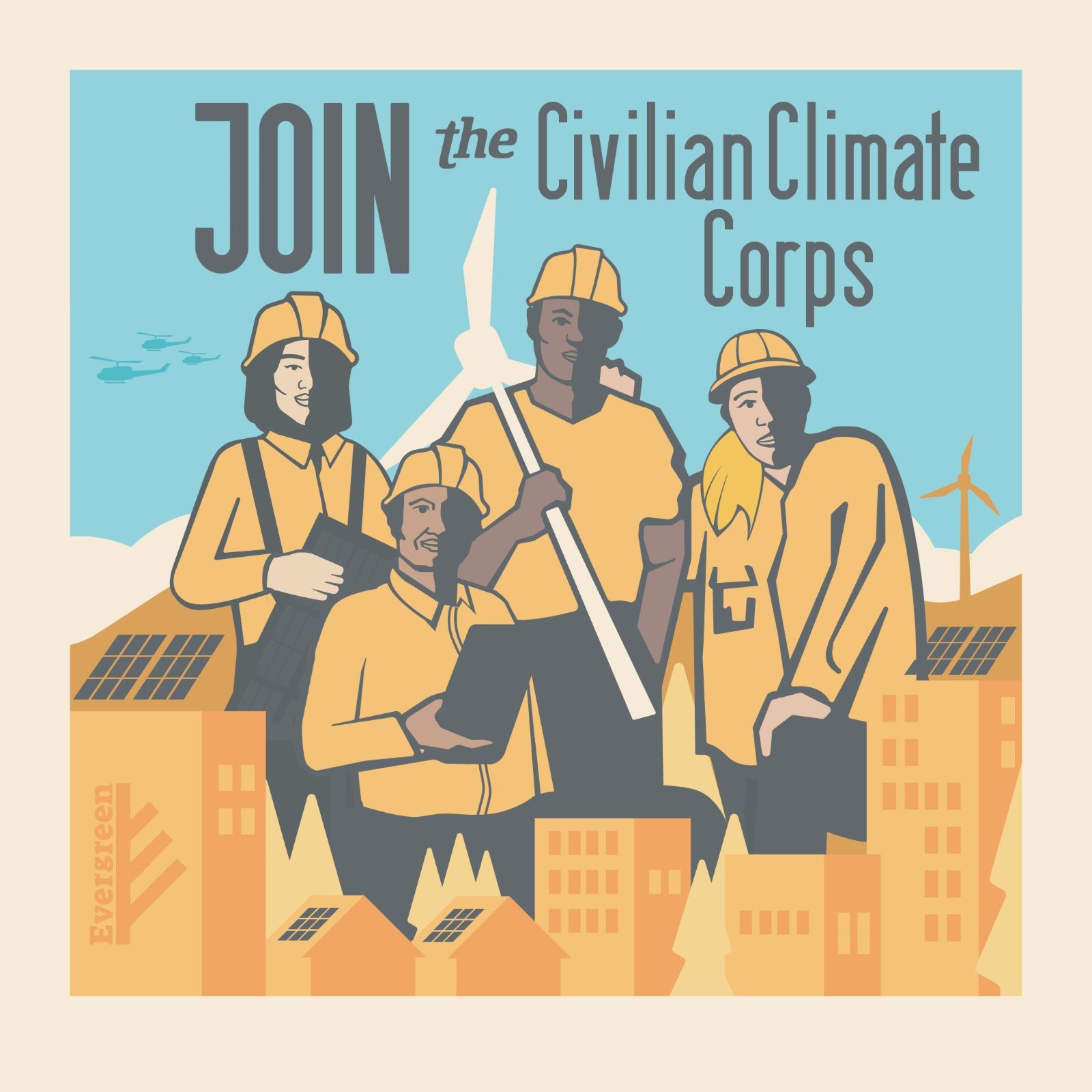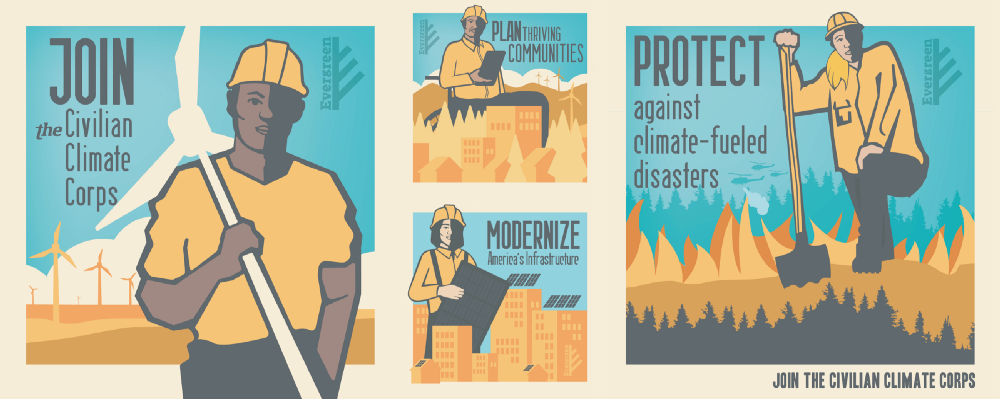What Should Come Next
What we know so far about the ACC is exciting and promising, but there are still lingering unknowns that we need to get right.
1. Sustainable funding
The ACC is funded through climate investments across the federal government, and thanks to the billions of dollars in investments coming from the Inflation Reduction Act, it’s likely that this will mean a healthy amount of project funding.
That being said, national service (like AmeriCorps, Senior Corps, and other programs and initiatives) generally draws a line between budgeting funding for people (corps member wages, benefits, and training) and funding for projects (equipment, materials, and other project costs). This raises the question of how much funding will flow to people versus projects and whether there’s sufficient funding to actively sustain and grow both.
And this isn’t just a question of balancing the books or program design; it’s essential for advocates to know how to best support the program’s implementation, growth, and efficacy. Advocacy in Congress to secure further funding will be critical in the months and years to come. We applaud the White House’s leadership in piecing together existing investments to form the ACC. We also encourage the administration to establish clear funding streams to ensure the ACC’s sustainability and growth through additional appropriations.
2. A full living wage and good benefits for corps members
While the Biden administration has emphasized that this program will put young people on good-paying career pathways, we don’t actually know exactly what the ACC will pay its incoming 20,000 members or what benefits they will receive. Consistency across the federal and state programs is key, but we’ve seen promising signals so far—the Forest Corps, the ACC’s first announced initiative, will pay its members $15 per hour, along with lodging, transportation, clothing, a living allowance, and health benefits.
It’s essential that the ACC pays every corps member a living wage with good benefits (like health care coverage and support for child care, housing, transportation, and education) in the long term, especially if it wants to design a program that’s accessible to folks from disadvantaged and diverse backgrounds.
Certain rules at AmeriCorps limit the grants provided per member service year. Those restrictions are a barrier to ensuring a living wage across the board, and the administration must plan around them. The White House should investigate current AmeriCorps grant restrictions and propose administrative fixes before the ACC is rolled out. Congress must back up these efforts by supplementing the funding the White House has already secured and ensuring that every ACC member can be paid a full living wage.
3. Greater accessibility to disadvantaged communities and populations
The White House has already shown that it’s prioritizing investing in disadvantaged communities via corps recruitment and projects by applying its Justice40 to the ACC.
However, the White House should go further by making more detailed commitments in the program’s design, including a pledge to both direct 40 percent or more of project benefits to environmental justice communities and hire 40 percent of corps members from those same places. Projects should also be developed in conversation with community members to facilitate a bottom-up approach to climate action.
The ACC should be even more inclusive by improving accessibility for people of an even wider variety of backgrounds. Positions should be available to applicants regardless of physical ability, and Congress should amend the National and Community Service Act of 1990 to expand AmeriCorps eligibility to undocumented people. Youth from underserved backgrounds and non-native English speakers should likewise have access to join the ACC. This is partly a matter of program design but also an opportunity for equitable recruitment through outreach to students at trade schools, minority-serving institutions (MSIs), Historically Black Colleges and Universities (HBCUs), and Hispanic-Serving Institutions (HSIs). The ACC can advance two interlinked goals: advancing environmental and social justice and training a new generation of workers in the climate and resilience economy.
4. Support for unions
The ACC can and must build pathways into good union jobs. That means creating training curricula that provide corps members the skills to secure registered union apprenticeships after their term of service. The ACC should build those career ladders in partnership with union locals, which can shape training courses and even dedicate some of their own members’ time to training ACC members. Those formal relationships could also lead to guaranteed apprenticeship slots for ACC members upon graduation from the corps.
Supporting unions also means upholding AmeriCorps’ non-displacement policy, which would ensure that ACC members never replace union workers on their projects. By taking these steps, the White House can ensure the ACC helps strengthen and grow America’s union workforce for the clean energy transition.
5. Expanded availability across age groups
The launch of the ACC was an exciting day for youth living amid the climate crisis, eager to tackle it head-on. National service opportunities like AmeriCorps, and now the American Climate Corps, are often primarily targeted toward young people, but the ACC should offer expanded availability across all age groups.




